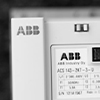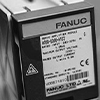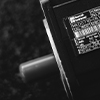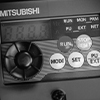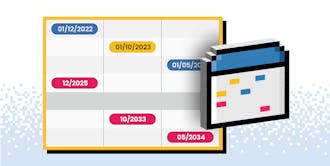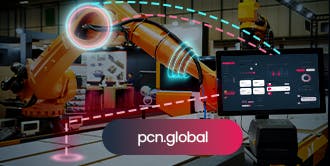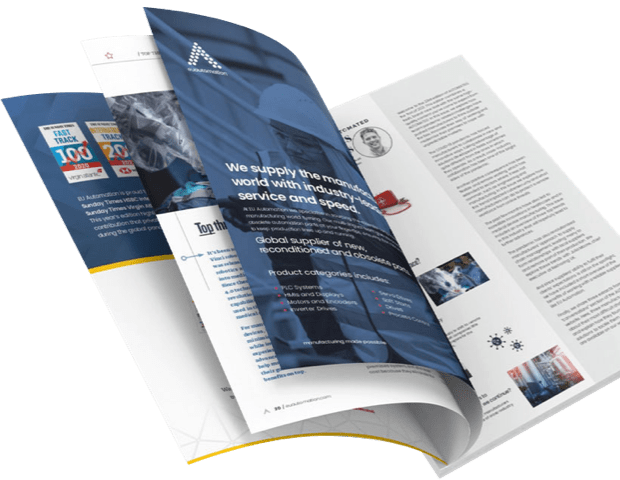Navigating the challenge of Siemens’ product lifecycle
July 1, 2025
No manufacturer possesses a magical elixir to keep their parts completely functional. With time, all machinery becomes obsolete. Different manufacturers like Lenze, ABB, Siemens and other manufacturers provide information that helps businesses transition with ease. Siemens product lifecycle data is a key resource in understanding when components will be phased out.
In systems where your machinery works perfectly with these parts, changing can be a huge hassle. Many companies offer alternative solutions. We will spotlight Siemens in this article and address the phases of their product lifecycle. Also, we will explore how EU Automation can assist your business with obsolete Siemens parts.
Many businesses rely on Siemens parts and machinery for their manufacturing and production needs. As part of its push toward modernisation and technological advancement, Siemens has phased out certain standard components. The list includes the Siemens S7-200 PLC, which became obsolete last year.
Businesses that are unaware of Siemens' product lifecycle risk facing serious setbacks. This is especially true for those who don’t know which parts are nearing obsolescence.
Common Siemens part families nearing obsolescence:
We have picked out two popular Siemens part families that are nearing obsolescence. Some of these Siemens parts that are reaching the end of their life already have replacements ready. However, others are still in a phase where they are receiving support for spares. Here are some popular Siemens parts nearing obsolescence:
The SIMATIC S7-300 system: Siemens' S7-300 system is a modular mini-programmable logic controller (PLC) system developed for medium-scale automation operations. In a release in November 2024, Siemens announced a change regarding its PM400 milestone. Initially scheduled for October 1, 2023, it will now transition to its PM410. This marks the beginning of its discontinuation phase, which will take effect on October 1, 2025.
The SIMATIC ET 200M I/O system: The ET 200M I/O system is a modular I/O station for the control cabinet with high-density channel applications for SIMATIC S7-300. In a release in November 2024, Siemens announced its PM400 milestone. Siemens will transition this milestone, originally scheduled for October 1, 2023, to its PM410. The transition marks the beginning of its discontinuation phase, effective October 1, 2025.
The SIMATIC HMI Comfort Panels 15" - 22": The SIMATIC HMIs, or Human-Machine Interfaces, are advanced devices. They serve as a bridge between operators and industrial machines which enable monitoring, control, and visualisation of various processes. A recent announcement indicated that the SIMATIC HMIs were set to commence the P.M 400 phase, which began on the 1st of October, 2024.
Siemens SIMATIC HMI lifecycle phases. What does this mean for the end-user?
There are five stages in the Siemens SIMATIC HMI product lifecycle. The stages are relevant for both the core products and system components, as well as spare parts.
However, the second and third phases do not apply to the SIMATIC HMI accessories. The various stages in the Siemens product lifecycle affect customers and end users differently. We will be examining each phase and the effects on customers.
Active marketing (P.M 300)
From this date, i.e, the date of release, the product becomes available for order, for a period of 12 years. During this period, the product is actively marketed for customers. While the new part is actively marketed, a different price point is set for the spare part version of the product.
Generally, only prices for new parts are shown in stores and online marketplaces. The price for spare parts is available when you contact the Siemens contact persons available.
This phase is important for customers and end users, as you have to ensure you are aware of the P.M 300 date before making a purchase. Also, knowing the difference between the prices of new parts and their spare parts can inform your buying decision.
Phase-out announcement (P.M 400)
At this phase of the Siemens product lifecycle, a 10-year warranty for spare parts begins. The heavy marketing efforts for the new part drop begin, although it will still be available for buyers. More emphasis begins on spare parts.
Customers shouldn't expect changes anytime soon since these parts are still far from reaching their end-of-life Siemens phase. Rather, the subtle change for end users will be that they likely see fewer ads for the new parts.
Product cancellation (P.M 410)
In this phase, new production of the part has typically ended, and only spare parts remain available. Customers should pay close attention when ordering, as availability may be limited and identification is key. This stage usually aligns with the end of the PM400 phase.
Product discontinuation (P.M 490)
At this stage, the 10-years spare parts obligation ends, production and support are discontinued. This marks the official end of the parts lifecycle. The only cases that will be attended to are genuine warranties.
There is not much customers can do at this stage to procure spare parts directly from the OEM, but parts may still be available through reputable third-party suppliers. They can only lodge complaints for assistance that falls under the product warranty.
End of product lifecycle (P.M 500)
This milestone marks the end-of-life cycle for the product. All database records have been frozen rather than deleted. Once that happens, obtaining replacement components, fixing them, or seeking assistance will be impossible. You can still get advice about successors from Siemens, and replacement components may still be available through third-party suppliers.
Tips for sourcing replacements or alternative options:
Working with obsolete Siemens parts can be quite challenging but there are strategies to help you maintain your equipment and make the necessary adjustments. Here are some practical suggestions
1. Reach out to distributors/specialists
EU Automation provides independent distribution for many obsolete Siemens parts. Distributors will often have enough stock and provide support and expert advice on possible upgrades and replacement parts.
2. Modernisation/upgrades may be a better fit.
This is usually the more direct solution when parts become obsolete. You can opt for a complete upgrade of your entire system, especially if many of your Siemens parts are becoming obsolete. Choosing this option may be slightly more costly. However, it provides you with more upgrades that enhance system efficiency, energy efficiency, and offer additional benefits.
3. Safety stocks
If you are still looking for replacements after an item becomes obsolete, having stock on hand could be beneficial. It might serve as a safety net for your needs. Preparing a safety stock is essential for when Siemens Simatic HMIs become outdated. It also acts as a buffer against periodic supply irregularities before any obsolete Siemens components are available.
4. Repair services
Another option businesses take is to repair broken or obsolete parts. Many repair experts can repair, refurbish, and even recreate obsolete Siemens parts. Competent repair companies can identify the problems with an obsolete Siemens part, identify possible fixes and repair them. In cases where the parts are difficult to repair, they can reverse engineer the parts and make similar parts that function well enough for industrial use.
5. Proactive Siemens obsolescence management
It is vital for your business to maintain a proactive approach to Siemens obsolescence management. This strategy will help you actively monitor your stocks and the Siemens product life cycle for your parts, helping you avoid surprises when obsolescence announcements are made.
How partnering with EU Automation can help you with obsolete Siemens supply
EU Automation supplies automation parts worldwide. We ensure that the right components are easily accessible. This approach helps companies steer clear of issues related to obsolete components and reduces downtime.
EU Automation provides global access to Siemens parts, including the S7-1500 and the SIMATIC ET 200SP series. If a Siemens component becomes obsolete, we will find and deliver the parts you need, regardless of their age, scarcity or location, to get your facility back up and running swiftly.
Conclusion
The purpose of preparing for obsolete Siemens parts is to reduce the possibility of delays in production that rely on them. Businesses must strive to anticipate faults and obsolete parts with Siemens obsolescence management plan. It becomes easy when you have a good idea of the Siemens product lifecycle. You can make proactive and preventive plans to transition or secure partners that provide these parts
Citation
- https://support.industry.siemens.com/cs/document/109809890/information-about-the-product-phase-out-of-s7-300-et-200m-components?dti=0&lc=en-WW
- https://support.industry.siemens.com/cs/document/109824856/announcement-of-the-product-phase-out-of-simatic-hmi-comfort-panels-15-22-as-of-october-1-2024?dti=0&lc=en-DK
- https://www.siemens.com/global/en/products/automation/systems/industrial/plc/simatic-s7-300.html
- https://www.siemens.com/in/en/products/automation/systems/industrial/io-systems/simatic-et-200m.html
- https://support.industry.siemens.com/cs/document/91688124/description-of-the-product-lifecycle-for-simatic-hmi-products-(plm)?dti=0&lc=en-US
- https://support.industry.siemens.com/cs/document/109824856/announcement-of-the-product-phase-out-of-simatic-hmi-comfort-panels-15-22-as-of-october-1-2024?dti=0&lc=en-DK
